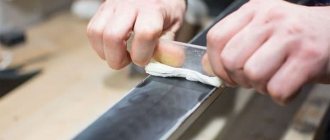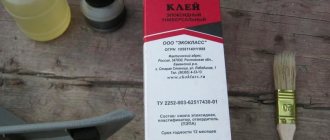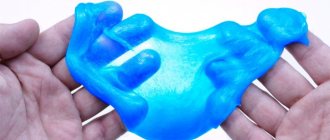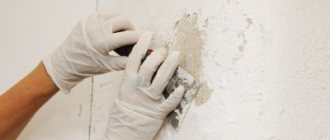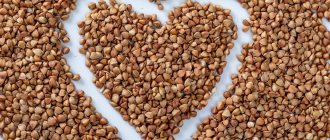Buying new skis is always accompanied by a careful selection of products and accessories to care for them. The most relevant ways to keep equipment in excellent shape are ski waxes and paraffin. They are responsible for preparing the surface for use. In this case, weather conditions must be taken into account.
The comfort of a classic ride is guaranteed when the skis effectively glide forward and hold back. The absence of such parameters leads to discomfort when driving. It is possible to guarantee the absence of kickback with the help of ski wax for holding and sliding. We suggest we talk about this in more detail, since all ski owners are faced with the need to use care products.
Why do you need ski wax?
This is a general concept that is used for special ski care products. They provide ease of use as well as optimal speed while riding. Ski ointments protect sports equipment from the negative effects of external factors, primarily weather.
Products include:
● gels;
● powders;
● paraffins with different levels of hardness;
● pastes, as well as sprays, etc.
All preparations for treating skis perform two main functions - reducing friction on the ski surface while riding, as well as effective traction on ice and snow surfaces. Ski ointment will definitely be needed by owners of traditional plastic structures, which are characterized by a smooth surface. Without the use of these compounds, the ride will not be comfortable.
Manufacturers divide products into two categories:
● means for holding;
● gliding agent.
The first type is used by amateur and professional skiers for running and classic skiing. They reduce the user's speed if they are moving backwards and also make it easier to climb a snowy slope.
Ski glide compounds help improve acceleration as well as maneuverability of the winter device. They are necessarily used for running and mountain models of sports equipment. Such products will be required in situations where the ski owner plans to ski as quickly and comfortably as possible.
The first skiing is often accompanied by a classic ride, so winter equipment is first prepared using a grip composition.
How to remove wax from skis or snowboards
If the skis begin to glide poorly, then it is necessary to remove the lubricant. To make it more convenient to clean wax from equipment, you need to get a special plastic scraper or solvent.
General recommendations:
- The ski must be secured on a special machine.
- You need to move the scraper from toe to heel, working smoothly and without changing the force when pressing.
- The edges and grooves should be carefully processed.
- The remaining paraffin is removed with a stiff brush.
- To remove dirt and remaining paraffin from equipment, a hot method is recommended. To do this you need to purchase a special iron.
- Paraffin is applied using an iron. The surface is treated with a scraper until the composition has hardened.
Which area should I apply the ointment to?
To correctly select the area where you need to apply ski wax, it is important to take into account your skiing style. For example, if a skier plans to ski in a classic style, the back and front parts of the winter equipment must be treated with a sliding compound. The central part or block is lubricated with a holding agent.
The last is the length of the middle part of the ski, which takes approximately 60-65 or 70-75 centimeters. A sports device for children, teenagers, and short women has a length of less than 180 centimeters. This means that the middle part that needs ointment for holding is only 60-65 cm. Tall athletes use long skis (more than 1.8 meters), so they lubricate the pads 70-75 cm.
It is important to count the distance of the treated surface from the end of the boot, that is, from its heel towards the ski toe. You will need to place your foot in the mount to determine the correct pad size. Beginner athletes can additionally treat another 10-15 cm with ointment. This procedure for preparing for skating will allow you to protect yourself from slipping when pushing back with your foot.
If the user of winter equipment chooses a skating style, the skis are lubricated along the entire length with gliding ointments. It is important to choose paraffin based on your goals. For example, organizing active leisure time on weekends is accompanied by minor financial expenses for the preparation of sports equipment. The budget increases significantly for professional athletes who participate in winter competitions.
Why choose liquid paraffins, application
In terms of functional properties, liquid formulations are no different from solid ointments. All paraffin waxes are designed to impregnate equipment for better glide. To ensure the best effect from the treatment, thermal exposure after applying paraffin is recommended.
The use of liquid paraffins exists in two versions:
With heat treatment
As a rule, this operation occurs at home. Skis need to be prepared; they need to be cleaned and dried.
- The iron must be heated to 150°C.
- Paraffin should be smeared on the sliding side.
- Iron from toe to heel.
- Allow the equipment to dry for about 15 minutes.
- Go over the layer with a stiff brush.
Thus, the sliding surface is leveled and smoothed. Heat treatment can be repeated up to 10 times to fix microcracks with wax.
No heat treatment
If it is not possible to heat treat the skis, you can use the traditional method of lubrication without ironing. Cold lubrication must be done in a warm room.
- Wipe off dust and dirt from a dry, clean ski with a brush.
- Wipe the sliding side well and let it dry.
- Apply a thin layer of lubricant and leave it for 5 minutes.
- Rub the paraffin with a cork or sponge. Let it brew for 10 to 15 minutes.
- If a thick layer of lubricant has been applied, it must be cleaned with a brush.
Read also: Choosing all-around skis
Ski preparation
Before you start applying grip wax, you will need to carefully prepare the sliding surface of the ski. To do this, sand the block using sandpaper. You will need an option with a fine grain, for example, marked 100. It is important to perform the procedure only after the skier has determined the optimal length of the last.
After processing a smooth surface, it becomes rough. With such a structure, the consistency of ski wax holds more effectively, that is, it does not wear off as quickly and is fixed at a much greater distance.
Different lubricants for different types of skis
In professional cross-country skiing, several types of lubricants are used, designed for different types of riding.
On hold
Ointment for proper ski grip is applied to the pads. The last is considered to be the area under the shoe and 30 cm forward. For each person, the holding area is individual, so you don’t have to adhere to clear markings. At the back, such lubricant should reach a maximum of the shoe heel. If the skis begin to slide poorly, it is recommended to reduce the block. Once the ideal length of the last is determined, it can be marked with a marker.
Read also: Adjusting ski bindings
Sliding
Such ointments can be sold in the form of aerosol sprays. They are quite easy to use for fast riding beginners who are just learning how to use paraffin. The aerosol is not intended for professional skiers, but rather for those who have chosen skiing as a form of fitness. The sliding surface is rubbed with this ointment, then it is rubbed and polished. This product has one drawback: it does not last long (about 15 km), depending on the hardness of the snow.
For clutch
Suitable for cross-country, skating and classic skis. The lubricant is useful in wet, wet snow, and it acts as an accelerator. When equipment is on the move, this protective coating prevents slipping. It is recommended to apply lubricant from the heel 80 cm forward to the toe. This type of lubricant is suitable for sliding surfaces made of wood; it is considered the best option.
Adhesion ointment has a sticky structure and is applied in several stages. Each layer must be leveled with a special synthetic cork. After using the equipment, the grease is removed with a plastic scraper or using a solvent.
How to apply ointment to skis?
The method of applying the composition depends on its type. The classification of ski waxes is represented by solid and liquid products. Liquid products are also called klisters. Let's take a closer look at the features of treating the sliding surface of winter equipment with two types of ointments.
Solid holding compounds are produced in jars made of aluminum foil. To apply it to skis, you will need to release part of the tube from the fixing surface to collect the substance. The ointment is applied to the surface of the equipment in a warm room. Next, using a synthetic rub, you will need to distribute the product over the block so that you get a thin, uniform layer. After treatment, the skis can be taken outside, where several more layers of paraffin are additionally applied.
Klisters are used when skiing occurs on coarse snow and ice. Under such conditions, solid compounds wear out faster, which leads to less reliable grip. Ski ointments of liquid consistency are produced in tubes, so their use requires special care and appropriate skills.
A small amount is squeezed out of the container on the surface of the ski, and leveling begins using a special plastic scraper-spatula. Athletes rub the ointment, usually using their fingers. It is permissible to use a rubbing compound that is suitable for solid compositions. It is important to remember that it cannot be reused for solid products, since the surface will absorb part of the klister.
Liquid ski waxes should not be used to prepare for a walk at an air temperature of about 0 degrees, as well as on snow that has just fallen. Solid compositions are presented in different types, taking into account air temperature. Manufacturers mark them with a specific color, which allows skiers to understand them correctly.
Wood or plastic?
Are you a beginner athlete and prefer less slippery wooden models to practice your technique?
As in the old days, ski wax is applied to their surface along the entire length, adding warmer wax under the block. No other means other than ointment are suitable for treating the sliding surface of wooden skis. To make skis glide better, their surface is treated with ski wax, which is suitable for use in certain weather conditions and matches the structure of the snow.
In terms of durability and gliding properties, modern plastic skis are much superior to their wooden counterparts. And you can ski them even at positive temperatures, which significantly increases the ski season.
How to apply ointment to skis in cold/frost?
There are often situations in which an athlete needs to treat the sliding surface of skis on the street, for example, during a walk or sporting event. To do this, it is important to have with you a set of paraffins that are used at a certain temperature. Manufacturers produce the following compositions:
● Blue. Their purpose is to process at temperatures up to -10 degrees.
● Green. Use at temperatures from -10 to -25 degrees. It is permissible to use blue ointment, but in as thin a layer as possible.
● Black. The use of these ski compounds is possible at temperatures from -15 to -30 degrees Celsius.
● Purple. Suitable for treating skis at air temperatures around 0. This type of ski wax is also used in colder weather or high air humidity, and when skiing on coarse snow.
● Yellow, red. They have a semi-solid consistency, which is important to carefully apply to skis if the winter air warms up above 0.
This classification allows you to correctly select the composition that will be used to process skis. For example, at an air temperature of -5 degrees, it is better to choose blue. You will definitely need to take borderline compounds with you - purple or green. This will allow you to adjust the ski lubricant when it gets colder or warmer.
Features of impurities in paraffin lubricants
Among the large selection of lubricants, it is worth noting the two most popular types:
Read also: Which ski stance is the most stable?
Wax with hydrocarbon
This composition is often found on the shelves of sports stores. It has water-repellent properties. Easy to use during hot and dry processing. Hydrocarbon lubricants are sold in universal and temperature-adjusted formats.
Universal wax is suitable for any sport except competitions. Its advantages include excellent gliding and dirt repelling. But such a coating wears off very quickly and needs to be constantly renewed.
Temperature-oriented waxes are often used by professional athletes. This lubricant contains certain substances responsible for sliding.
Fluorocarbon wax
Such base compounds are valued for their water-repellent properties, which are responsible for the best gliding on snow. They cost more than paraffin ointments. Fluorocarbon is considered a quality lubricant that needs to be updated infrequently.
Main classification:
- low fluoride is used when snow humidity is up to 60%,
- medium fluoride is suitable for 60-80%,
- high fluoride from 80%.
Fluoride waxes are sold in the form of powders, pastes and sticks.
Important: The fluoride content of the wax indicates that it is recommended for use in high snow temperatures.
Removing ointment
After a competition or walk, it is important not to forget to remove paraffin from the sliding surface of plastic or wooden skis. To do this you will need to use any plastic scraper. This could be a school ruler, a cassette case, an old bank card. After removing the previous product, you can apply a new good ointment.
To more effectively clean the surface, you will need to use cotton wool, first moistening it in turpentine or gasoline. Professional athletes use a special kit, which includes a plastic scraper and a proprietary odorless wash.
How often
Ideally, the holding ointment is renewed before each trip, taking into account weather conditions. Plasticine is applied on top of the old layer and rubbed with a cork. Liquid lubricants (klisters) must be removed with a scraper after each trip and redistributed before the next one, otherwise they will stain your hands, clothes and cover.
The resource “Miss Clean” recommends lubricating wooden skis on the ends with a classic sliding lubricant in the medium temperature range (-2-8), using an iron. This coating will last the entire or at least half of the season for amateur skiing, and before each ski trip you will only need to renew the holding ointment on the block.
Of course, ideally, the lubricant will need to be covered with a warmer or colder one if the weather changes, but in practice, few people go skiing at -20, and at zero, skis with a medium-temperature lubricant will go quite satisfactorily; here it is much more important to apply liquid ointment on the block (designed for warm weather and icy or wet ski tracks).
Do new skis need to be lubricated?
Usually yes. Skis in the middle price segment come “naked”, and after purchase they need to be lubricated for braking, and wooden ones also for gliding (and protection from moisture at the same time). However, there are also models that come already lubricated - this should be indicated in the instructions. Plastic and combi ones do not need lubrication for sliding if they are not intended for sports racing.
We recommend: What is a rice cooker, its differences from a multicooker
There are 5 comments left on this post.
| Sergey | 27 02 2018 | |
| good article, everything is in full, understandable and accessible, not that disabled people on YouTube take some pieces of information about holding ointments, machines, respirators and other nonsense, now all that’s left is to try Answer | |
| Alexander | 17 01 2016 | |
| What does “warmer ointment” mean? please give an example and explain Answer | |
| Alexey Aslamov | 17 01 2016 | |
| Alexander, in principle, in the article in the subtitle “How to choose the right ointment for skis,” everything is described in quite detail. But I'll try to explain further. If the current outside temperature is -15 degrees Celsius, then we lubricate the ends of the skis with ointment or paraffin at the temperature for which the ointment is designed (-10 -25 degrees, for example). And we apply a warmer ointment under the block to hold it in place. At the same temperature outside (-15 degrees), under the block we apply an ointment designed for use at a temperature of, say, -5 -10 degrees, that is, in warmer weather. Then the ski will not slide back when you push with your foot, but will stick a little to the track during the push. Answer | |
| Sonya | 12 11 2015 | |
| Very useful material. Helps you figure out how to lubricate your skis. Answer | |
| Alexey Aslamov | 12 11 2015 | |
| Happy to help. Answer | |
Cross-country and alpine skiing
Cross-country skis need to ensure perfect gliding. Solid (semi-solid) compositions are applicable: gliding (holding) ointments, paraffins, powders, sprays. The procedure is as follows:
- Clean the surface of the equipment from dirt and wash with soap.
- Treat with a degreaser.
- Apply a layer of lubricant using a hot method.
- Leave until cool.
- Remove excess with a scraper.
- Use a sponge to evenly distribute the liquid paraffin.
Compositions used to treat cross-country skis must be weather-appropriate and marked 3 degrees above the outside temperature.
If a lubricant is used for mountain models, then the instructions are as follows:
- Treat the pad area in 2-3 layers.
- Rub the composition in with light movements.
- Leave to harden for 20 minutes.
Treating running equipment with ointment means:
- Attach to the bed.
- Carry out hot cleaning, melt the paraffin.
- Smooth it with an iron, go over the top with a hard scraper, not allowing it to harden, so that the layer is no more than 1 mm.
- Leave to harden for 0.5 hours.
- Walk with a nylon sponge.
- Clean the surface until it starts to shine.
Preparing skis: advice from professionals
Universal hydrocarbon waxes
This product category is the most budget-friendly and easiest to use. This type of paraffin can be used in cases where you have to spend a long time skiing, but there is no need to show high skiing results. Paraffin wax is perfect for ski instructors or guides.
Advantages of waxes: excellent water-repellent ability, which ensures that the ski glides quite easily; protection against dirt sticking to sports equipment.
Disadvantages: wax must be frequently applied to the surface of the ski, as it wears off quickly due to its soft structure.
Temperature oriented hydrocarbon waxes
Used by athletes in specific temperature conditions. Paraffins contain special additives that, at a certain snow temperature, activate the action of the wax and ensure better ski glide.
Cold (hard) waxes - used for skiing when the snow is very cold and its temperature on the ski slope is -12 degrees or lower. In conditions where the snow layer is cold and has low humidity, it is important that paraffin has increased wear resistance. It is solid paraffin that is resistant to sharp ice crystals. However, as soon as the temperature of the snow rises and its humidity increases, the skis lose their ability to glide, as the snow simply sticks to the surface of the equipment.
Medium (semi-hard) waxes - used for skiing at snow temperatures from -12 degrees to -2 degrees. They have slightly less hardness, but they repel moisture well, which is necessary in weather conditions when the humidity of the snow is high.
Warm (liquid) waxes are paraffins with a soft consistency, which contain silicone or substances similar in action and characteristics, providing excellent water-repellent ability to skis. Waxes are used at snow temperatures of -2 degrees and above.
Fluorocarbon waxes
This type of paraffin provides high water-repellent properties to skis and guarantees their excellent glide on snow.
low fluoride – used at low snow moisture levels (less than 60%);
medium fluoride - used in cases where the snow humidity is at an average level (from 60% to 80%);
high fluoride – suitable for high levels of snow humidity (more than 80%).
Which paraffin is better
If we talk about the quality of waxes presented on store shelves, then, first of all, it is necessary to take into account their cost.
Some of the cheapest paraffins are fluoride-free waxes. If financial resources are limited, then you can purchase the entire range of such waxes, namely: CH4 (-10...-32), CH6 (-6...-12), LF7 (-2...-8), LF8 (+4...- 1), HF10 (+10…0). Thus, skis can be prepared for skiing at any snow temperature.
The presence of fluorine in paraffin indicates that the wax can be used at high snow temperatures; in addition, the skis are reliably protected from dirt on the piste and glide perfectly on the snow. The cost of such waxes is much higher and the purchase of such products is not always justified or possible.
If the funds are minimal, then you can get by with basic paraffin (there is no marking on it) and treat the surface of the skis only with it.
Where to buy and how much does paraffin for skis cost?
You can purchase waxes in specialized sports stores. As for the cost of the product, it is influenced by several factors: the composition of the wax, the volume of packaging, and the manufacturer.
The price of the most budget brands of domestically produced waxes does not exceed 100 rubles. Paraffins from foreign manufacturers with a high fluorine content can cost in the range from 1,700 rubles to 7,000 rubles.
Some manufacturers offer products for skiing directly in Russia. In addition, you can find products designed for use with artificial snow. The range includes waxes specifically for training athletes.
How to apply paraffin to skis
In this matter, the main thing to remember is that any ski lubricant is better than no lubricant. This is especially true for skis made of wood.
To prepare sports equipment for skating, you will need two types of wax: for sliding and for holding.
For the procedure you need: an iron (if you don’t have a special one, you can use an ordinary household one, but without holes in the sole), a damp cloth, a plastic scraper, a nylon brush, a dry soft cloth.
The first surface treatment of the ski is carried out at a temperature of 65-70 degrees with paraffins that are soft in consistency (fluorine-free).
Using a warm iron, it is necessary to heat the entire surface of the sports equipment or only the heel or toe areas, taking into account what kind of skiing the skis are intended for.
Using a heated iron, touch the prepared paraffin and drip a little onto the surface of the ski.
Using an iron, melt the wax into the surface of the equipment, while constantly ensuring that a layer of paraffin is maintained between the skis and the iron. Leave the ski for 10-15 minutes until the wax completely hardens.
Then you need to remove the paraffin using a scraper and polish with a prepared dry cloth.
Using a similar method, you should treat the remaining sliding surfaces of sports equipment and apply paraffin to the base layer of wax that matches the temperature of the snow. The method for applying weathering wax is similar to the method described.
How to remove paraffin from skis
As soon as the skis begin to lose speed and glide poorly on the snow, you need to think about the fact that it’s time to pay attention to surface treatment of the equipment.
In order to clean the surface of the ski from paraffin, you should use a special remover or scraper.
Washing removes the base layer of paraffin, in which case the wax will have to be applied starting from scratch. If the base layer of wax remains on the surface of the ski, you can subsequently apply paraffin to it, suitable for any weather conditions.
To clean skis you need: a special machine for attaching equipment, a scraper made of organic glass or plastic.
First you need to secure the ski in the machine.
Movements of the scraper are carried out from the nose of the ski to the heel. The scraper should be used evenly without changing the pressure. This will avoid deformation of the ski.
Note: it is important to clean the scraper from excess paraffin and ensure the sharpness of the object. If necessary, sand it with sandpaper.
Particular attention must be paid to processing the edge of the skis and the groove. To do this you will need scrapers of the required shape.
The remaining parts of paraffin must be removed with a stiff brush. Movements should be short.
In order to clean the sliding surface of the ski from adhering dirt or remove all layers of paraffin, including the base one, a hot method is necessary. To do this, you will need a special iron or a household iron without holes in the sole.
Using an iron, you need to apply paraffin to the ski, and before it hardens, treat the surface with a scraper. If the action is performed correctly, a roll of paraffin, dirt and other substances used should form.
Sport is an integral, important part of a healthy and fulfilling life for every person. And the sport associated with skiing is doubly useful, as it allows a person to breathe fresh air and enjoy nature. Have an active holiday, relax with your whole family, friendly groups and live brightly.
To run comfortably with a classic stroke, the skis must glide forward and “hold” back. Unsupportive skis are a torment for a skier. We have already covered this in a separate article. Today we will tell you how to wax skis for a classic move so that there is no “recoil”. The process is very similar to preparing skate skis, but you need to additionally lubricate the holding area.
Where is ski holding ointment applied?
Grip ointment is applied to the skis in the “pad” area . Last - the area under the boot and forward about 30 cm.
This image shows the approximate last length (based on ski length) for beginner skiers.
When selecting a pad, you should not accurately calculate centimeters and strictly follow the instructions. The ideal holding zone is individual for everyone . Start with the recommendations on the diagrams, and then adjust, depending on the glide and grip of the skis.
There is “kickback” on skis - increase the block forward.
Skis glide poorly and slow down with ointment - reduce the block.
Important! Adjust the block only at the front of the ski. At the back, the holding ointment should reach a maximum of the heel of the boot.
Once you find your last length, mark it on your skis with a marker or sticker.
Quick preparation of classic skis
What is needed to prepare skis without an iron and other equipment?
slip ointment for quick application
holding ointment for quick application
In this method, everything is simple: the sliding area is smeared with sliding ointment, the holding area is smeared with holding ointment. We wait 2 minutes and you can ride. Learn more about applying liquid gliding ointments.
The method is very convenient and fast. But it is not as effective as preparing skis with solid ointments. Quick ski preparation is enough for an average of 5 km. If you plan to ski more, then you will need a different way to lubricate your skis.
Preparing classic skis with solid ointments
The principle is the same, but holding ointment is applied under the block, and the sliding area is treated with paraffins using an iron. We wrote how to treat skis with paraffin in the article:.
What is needed to apply the holding ointment?
solid holding ointment
synthetic rubbing
masking tape (preferred, but not required)
100-grit sandpaper (preferably, but not required)
How to apply grip ointment to skis?
It is advisable to treat the block with fine sandpaper under the holding ointment. Ideal with 100 grit. Carry out this operation only when you find a block that suits you. Rough plastic will hold the ointment better and it will last longer.
To make smearing more convenient, you can mark the area of the block with masking tape. This way you will not stain the sliding surface of the ski with grip ointment when you rub the ointment.
The ointment is applied in thin layers, each layer must be rubbed with a synthetic cork. It is better to apply 2-3 thin layers than one thick one. A thick layer of ointment is difficult to spread evenly.
To increase the mileage covered with one application of holding ointment, the primer layer can be applied under the iron. That is, first sand, then fuse a thin layer of ointment with an iron, and then everything is as usual.
This treatment of skis will be enough for 50 km or more. If the weather has changed, then the old ointment must be removed and a new one applied according to the weather.
How to remove old grip ointment from skis?
The old holding ointment is removed with a scraper. To do this, it is better to have a separate scraper so as not to stain the sliding surface with ointment.
After removing the ointment with a scraper, the residues are washed off with special solvents. The procedure is optional, but after 2-3 treatments it is better to completely clean the holding area using washes.
End of form
Anyone who is seriously passionate about speed skiing knows how important timely care of equipment is. To achieve optimal glide, you need to be able to properly prepare your skis.
What factors determine the choice of lubricant?
In order for cross-country skis to be properly prepared, the following factors must be taken into account:
Air temperature . Depending on what value the thermometer shows, manufacturers provide various types of ointments and paraffins. The most common color options for their packaging are:
Red – the ointment is designed for temperatures above 0˚ C,
Blue – ointment is used at sub-zero temperatures,
Purple —lubricant is used in variable weather conditions.
Snow grain structure. Achieving the best glide will be possible by applying a structure to the sliding surface of the skis that fully corresponds to the structure of the snow under certain weather conditions.
Equipment required for preparing skis
When preparing cross-country skis, the following devices are used:
Tables and machines. Used to secure and conveniently hold skis during processing. Their design may include clamps or special fastening “legs”.
Thermal devices. Necessary for heating ointments and paraffins. Usually special irons and hair dryers are used. It is not recommended to use household irons to heat up paraffins - their soles have too high a heating temperature and can lead to the risk of damage to the sliding surface of the skis.
Scrapers. Serve to remove layers of frozen paraffin from a sliding surface. The material of manufacture is plastic or plexiglass.
Cycles. Designed for removing damaged layers of plastic with a fleecy structure from the sliding surface of skis. Used mainly by professionals.
Brushes. With their help, the final finishing of skis is carried out after applying paraffins and lubricants. Rotary brushes (mounted on a rotating axis) can also be used. Use brass and bronze brushes to remove dirt and old paraffin from the surface. A steel brush is used to give the sliding surface the necessary microstructure. Nylon brushes, depending on their hardness, are used to remove old paraffin (the colder the weather, the harder the brush).
Paraffins, pastes, liquid lubricants. Used to impregnate the sliding surface of skis. They differ in the content of fluorine and various additives. The high fluorine content makes the price of paraffin high. For frosty weather, paraffins with a low fluorine content are used, and for warm and humid weather, high-fluoride paraffins are used. Pastes and aerosols, according to manufacturers, can be applied in any weather, but they are applicable for those skis that have already been treated with paraffin. Among the manufacturers of paraffins and lubricants, Swix, ToKo, Rode, Holmenkol, and domestic ones: Luch, MVIS, VISTI have proven themselves well.
Cross-country ski preparation technologies
Depending on the level of the skier and the style of movement (classic or skate), various methods of preparing skis are used. For the amateur level, treating skis with special ointments will be sufficient. For the classics, these will be holding ointments that provide good glide and reduce the “recoil” when pushing.
The rules for selecting ointments recommend taking into account weather conditions and paying attention to the lower temperature limit indicated on the packaging. It should be 2-3 degrees higher than the ambient temperature. Apply ointment to the pad area in 2-3 layers, carefully rubbing each layer with light movements. It is best to do this indoors and allow the skis to cool for 10-15 minutes immediately before skiing. At the end of skating, the remaining ointment must be removed with a scraper and washed with a remover.
Paraffin treatment involves a more complex technology . A special table or machine is required. At the beginning of the preparation, a process of “hot” cleaning occurs, after which they begin to apply paraffin at a certain temperature.
The skis are fixed on a table or machine, a special iron is heated to the minimum melting temperature of paraffin. Molten lubricant is applied to the sliding surface and smoothed out quickly, avoiding delays. Before the paraffin has had time to cool, it is cleaned off using a scraper and a stiff metal brush. The recommended thickness of the molten paraffin layer should be from 0.5 to 1 mm.
When the cleaning stage is completed, they begin to apply paraffin “to suit the weather.” It is applied in the same way as cleaning paraffin, but after application, the skis are removed from the machine and allowed to cool for half an hour. During this time, the lubricant should penetrate deeply into the structure of the sliding surface. Then, using a scraper and a soft nylon brush, remove excess paraffin and bring the surface of the skis to a shine.
Applying paraffin to classic skis eliminates the need to treat the last area.
Ski paraffin is necessary to improve the sliding moment. No matter what kind of skis we ski - classic or skating - without additional lubrication the skis will give too good grip on the snow. But good grip is only needed when the wheels are moving on asphalt. In order to develop speed on a snowy slope, it is better to have minimal grip on the surface. In the case of flat skiing, reducing friction helps to reduce the effort a person makes when moving.
What are paraffins
Paraffins are hydrocarbon mixtures formed as a by-product of petroleum refining. Paraffin compounds have different degrees of viscosity. There are:
soft (liquid) paraffins that melt at room temperature;
solid – melt when heated within 70 ° C;
crystalline - turn into a liquid state at temperatures above 70 ° C.
Functionally, paraffins are, in most cases, lubricating, water-repellent substances. They are added to various mixtures to give the appropriate consistency and properties. For example, Vaseline is made from petroleum hydrocarbons.
Paraffins are used in technical lubricants. These substances have also found their use in skiing as agents that improve the gliding of skis and snowboards.
Ski wax
Ski waxes are traditionally divided into:
lubricants for cold skiing at snow temperatures below -12 ° C;
lubricants for skiing at snow temperatures -12 ° C…-2 ° C;
warm lubricants for snow temperatures above -2 ° C.
The key substance that provides better gliding at high temperatures is fluorine. The less fluorine, the more severe frost (and low humidity) the paraffin is designed for. Conversely, high fluoride greases are designed for mild and wet weather.
There are universal lubricants, the composition of which ensures good gliding on any snow. For example, TOKO Irox Fluoro spray, although low-fluorine, is designed for use in a wide temperature range of 0 ° C...-30 ° C. In addition to fluorine, ski lubricants include: silicone, various salts, oxidized metals.
Using wax on plastic skis
It would seem that plastic is a well-gliding material without lubricants. Unlike, for example, traditional wooden skis, which, due to the low density of the material, provided better grip and, accordingly, rode worse.
The new skis actually glide great. But as you ride, microcracks appear on the sliding surface and edges. Ice and snow particles damage plastic. And although these changes are not noticeable to the human eye, under a microscope the surface of such a ski resembles a mountain landscape. Sliding properties deteriorate due to such a landscape.
In order to fill all these microdamages and restore the perfectly slippery surface of the ski, hydrocarbon lubricants are used.
Why choose liquid paraffins?
It should be noted right away that paraffins in liquid form do not have any advantages over solid waxes in terms of functionality. The purpose of all paraffin waxes is to impregnate the sliding surface of the ski. To ensure the most effective rolling, all waxes, including liquid ones, require heat treatment after application.
Liquid paraffins are available in 2 types:
liniment;
aerosol.
Paraffin in the form of a cream-ointment, in general, from the user’s point of view does not have any differences from solid types.
The aerosol form provides additional convenience in terms of application. True, part of the product is sprayed past, which is why the consumption of paraffin aerosols is always greater.
Application of liquid paraffins
To apply liquid paraffin, the ski must be clean and dry. Particles of dirt, water, ice that become clogged in the micropores of the sliding layer will not allow you to apply paraffin correctly.
With heat treatment
Waxing of skis with heat treatment, as a rule, is carried out during periods between skiing in home-garage conditions. This initially assumes that the skis have been cleaned and dried.
Heat the iron to 150 ° C.
Spray liquid paraffin onto the sliding layer of the ski. We keep in mind that different types of skis require different models of lubricant application. For skating skis, the entire sliding surface is lubricated. Classic skis are waxed, bypassing the central part.
Iron the ski from toe to heel.
Let the ski cool and dry at a temperature not lower than 0 ° C for at least 10 minutes.
We pass the layer with the applied lubricant with a brush.
As a result of these manipulations, heated paraffin penetrates the pores of the plastic, fills them, and the microscopic “landscape” of the sliding surface is leveled. The wax remaining on the surface is excess. We remove it with a brush.
Ideally, this cycle should be repeated up to 10 times. The fact is that brushing, in addition to removing the surface layer, also removes part of the “useful” paraffin that filled the microcracks. When we repeat waxing several times in a row, we better “compact” the uneven skis with paraffin, filling the unevenness and microcracks more efficiently.
No heat treatment
Often we do not have the opportunity to use an iron, we are limited in time, and we need to lubricate our skis because they glide poorly. Manufacturers of liquid paraffins offer the theoretical possibility of using their lubricants without heat treatment.
Drying the ski.
We clean the sliding layer with a brush to remove dust and dirt from the pores of the plastic.
Wipe and let dry a little.
Apply a SMALL layer of lubricant.
Let stand for 3-5 minutes.
We rub it with a cork, a pad or whatever we are used to using.
Let stand for 10 minutes.
If you still put too much lubricant, you should use a brush and remove the excess layer. However, lubricant manufacturers warn that with the cold method of applying paraffin, brushing at the final stage is not significant.
And if it does, it will last no more than 5 minutes. For proper cold lubrication it takes about 1 hour. It is advisable to have sun or some room for drying.
You should be aware that, even if all of the above conditions are met, cold waxing is always an emergency measure, which in its effectiveness can never be compared with the classic heat treatment option.
Cost of liquid paraffins
Paraffins in the form of ointments cost about $5 per 25 g. Sprays, especially high-fluoride ones, can cost up to $40 per 50 ml bottle.
The types of skis do not influence the choice of one or another wax. However, it should be remembered that, unlike skating, the sliding surface of classic skis requires lubrication with additional holding ointment. Since traditional skiing requires pushing off and, accordingly, requires better adhesion of the ski to the snow at the point of application of force, the holding ointment is applied to the center of the ski.
The most popular is skiing. To avoid problems while skiing and to make the movement comfortable, you need to take care of your equipment in advance. There are several options for special ski lubricants that need to be selected individually.
Why lubricate your skis?
This question arises among beginner skiers, since many consider this procedure unnecessary. During driving, a frictional force is created, which depends on the quality of the equipment and the condition of the snow. To reduce it, lubrication is carried out. There is another reason why wooden skis and equipment made from other materials should be lubricated, since the use of ointment prevents slipping back during the push. Thanks to the application of a special product, the middle part of the ski sticks well to the snow. With constant use of lubricants, the service life of equipment can be extended.
Which skis don't need lubrication?
There are different opinions regarding whether preparing equipment is mandatory. If we turn to the competent opinion of specialists, they, discussing whether it is necessary to lubricate skis, say that if you want to enjoy perfect gliding, then it is recommended to carry out a simple lubrication procedure before each walk. In addition, this will allow you to preserve the equipment for a long time.
How can you lubricate skis at home?
In stores and other points of sale you can find many different products designed for ski fans. If a person does not plan to engage in it seriously, then there will be no need to spend money on expensive formulations presented in the form of aerosols or branded paraffins. For those who are interested in how to lubricate their skis for better glide, a wide range of different ointments are offered.
Such products are presented in two types: for better glide and grip. Beginning athletes can use universal kits from well-known brands: Visti, Swix or Briko. All products are color coded according to the temperature at which they must be used. If the temperature is above zero, then liquid formulations are used. For negative values, the following classification applies:
0 to -2 – purple color;
-2 to -8 – blue;
-5 to -12 – light green;
-10 to -25 – dark green;
-15 to -30 – black.
When figuring out how to lubricate skis, you need to pay attention to common paraffins, which, according to their properties, are divided into options for sliding and securing. It is worth knowing how to lubricate your skis so that the snow does not stick in the absence of other means, you can use wax and paraffin from candles, but medical grade is better. There is a widespread belief among people that you can use soap, but in reality it will not do any good.
How to lubricate skis at home?
To care for your own equipment, you don’t need to turn to specialists, because, knowing some of the subtleties, you can carry out all the procedures yourself at home. For those interested in how to properly lubricate skis, you should know that it is important to consider not only the material from which the equipment is made, but also the style of intended riding.
How to lubricate plastic skis?
If such equipment was purchased, then it is necessary to apply lubricant to a clean and dry surface at room temperature. When understanding this, it is worth considering the basic rules:
When using a solid ointment, apply it in several layers, rubbing each of them. After this, leave everything to cool and apply the last layer outdoors.
It is recommended to carry out the test after walking a couple of kilometers, and if necessary, the product should be changed. Those who are interested in why plastic skis need to be lubricated should know that without this, the glide will not be as good.
For classic skating, it is customary to apply paraffin or gliding ointments, but only to the back or front, but the central area is lubricated with holding agents.
When using paraffin, it is applied in drops, leveling them with an iron. After this, it is cooled and removed with a scraper. Finally, treatment is carried out with a nylon brush.
There is another important topic - how to lubricate plastic skis with notches. Such equipment does not require lubrication, but over time the notches wear off and then paraffin should be applied.
How and with what to lubricate semi-plastic skis?
This type of equipment is made of wood, but a plastic plate is applied on top of the sliding surface, which protects against wear. In operation it is the same as for products made of plastic. For those who want to know how to lubricate skis so that there is no kickback, then you should use the recommendations described above for the plastic version.
How to properly lubricate wooden skis?
If you have equipment made of wood, it will be impossible to do without lubricating it, which is applied to a dry and clean surface. First you need to carry out priming, for which paraffin is used and it is better to take a candle-tablet. You need to rub harder, and then run a hot iron on top. Remove any excess that is not absorbed. This procedure should be carried out before each trip to the snow. Instructions on how to wax skis are as follows:
Lay the equipment downside down on a flat surface and clean them with a rag.
Hold the heated iron 2.5 cm above the skis and start processing from the edge. Apply a little wax to the iron itself until it melts and drips. Walk it over the entire surface.
At the bottom, perform back-and-forth movements with light pressure. The resulting layer of wax should harden, and then, using a scraper, remove it, moving from the highest point to the bottom.
An important step in the instructions on how to lubricate wooden skis is to treat the entire surface with a special brush, making only translational movements and applying slight pressure on the tool.
Skis should be taken out into the cold for several hours, and then left overnight at room temperature.
How to lubricate combination skis?
Some manufacturers have created special combination equipment that is suitable for both classic and free style. It is worth noting that you can find them on the market less and less often. To choose an easy way to lubricate your skis, you need to consider what running style will be used in a particular case. Processing schemes will be described below.
How to properly lubricate cross-country skis?
For amateur skiing, you can simply use special ointments that are selected depending on weather conditions. They should be 2-3 degrees higher than the outside temperature. Lubricate the pad area with ointment, applying 2-3 layers, rubbing each layer with light movements. Finally, it is recommended to leave the equipment for 10-15 minutes. cool down. After riding, using a scraper and rinsing, the remaining product must be removed. The diagram on how to lubricate cross-country skis with paraffin is more complex.
First they need to be mounted on a table or machine. At the first stage, the process of “hot” cleaning is carried out.
Using an iron heated to the minimum melting temperature of paraffin, smooth out the melted lubricant. It is important to avoid delays.
Without allowing the paraffin to harden, clean it using a scraper and a stiff brush. The final layer should be 0.5-1 mm.
After this, paraffin is applied taking into account weather conditions. The procedure is similar to the steps described above, and after removing the residue, the skis should cool for half an hour.
Using a scraper or nylon brush, remove remaining paraffin, bringing the surface to a shine.
How to lubricate skis for classic skiing?
Fans of this kind of skating should use slip and grip ointments. The first is usually applied to the sliding surface, and the second to the last (the area in the middle, which is determined from the heel of the shoe plus 15-20 cm). For those interested in how to lubricate skis, you should know the following information:
At the first stages of treatment, cleaning is carried out, and then a gliding ointment is applied.
After this, treat the block with a holder ointment, which must be selected based on the temperature and humidity of the snow.
If it’s warm, then use liquid products, and if it’s cold, then use solid ones. In the second case, a grinding plug is used.
It is important to consider that grip and glide ointments should not be mixed.
After applying the first layer, the product must be given time to set, and only then re-lubrication is carried out.
The preparation is completed by polishing with a nylon brush.
Another important point is how to lubricate skis with paraffin; it is applied only to the ends of the equipment.
How to lubricate skating skis?
Processing equipment for such riding is simpler, since only gliding ointments are used. Not for professionals, one layer of ointment, selected according to air temperature, will be enough. As in the previously described treatment schemes, the surface is cleaned. After this, you can proceed to the instructions, which concern how to properly lubricate skis at home:
First, heat the iron to the temperature indicated on the paraffin wax.
Place the block on the surface of the iron and move it so that the drops of paraffin are evenly distributed.
After this, run the iron from heel to toe to completely melt the wax. A uniform shine will indicate that everything was done correctly.
An important step in the instructions regarding how to lubricate skis with paraffin at home is to remove excess with a scraper after the layer has hardened. Move against the direction of the ride. Finish the procedure with polishing.
How to lubricate skis?
Before going out into the snow, it is necessary to hot-treat the equipment, which will help fill the pores. The procedure for lubricating skis is similar to the options described above. First, dirt and existing unevenness are removed. Be sure to lubricate everything with a degreasing compound. At the next stage, apply the blue ointment hot, and then, after it hardens, remove excess with a scraper. You can also use liquid ointments that are spread with a sponge.
Based on materials from the site gducfkis.ru
Photo: i2.wp.com
Application. · lubricant for rubbing wooden parts (drawer guides, pencil cases, etc.)
· candles for lighting;
· lubricant for rubbing wooden parts (drawer guides, pencil cases, etc.);
· when mixed with gasoline - anti-corrosion coating [2] (flammable!);
· in cosmetics for the production of Vaseline;
· paraffins are registered as food additives E905 x
;
· used for paraffin treatment in medicine;
· lubricant for sliding cross-country skis, alpine skis and snowboards;
· in nuclear physics and technology: an effective neutron moderator and a proton “generator”.
· For impregnation of electrical paper used in the manufacture of capacitors and winding transformers. Sometimes cardboard used to make circuit boards using the surface-mounting method is also impregnated.
· For filling frameless inductors, to protect them from vibrations and microphone effects. Often used, for example, in VHF radios. Sometimes the entire volume of the microassembly is filled.
· In other cases where high dielectric strength, low AC losses, low price and the ability to be easily released from the filling by simple heating are required.
Substances that have the same composition but different structures are called structural
isomers .
Source
Which skis don't need lubrication?
There are different opinions regarding whether preparing equipment is mandatory. If we turn to the competent opinion of specialists, they, discussing whether it is necessary to lubricate skis, say that if you want to enjoy perfect gliding, then it is recommended to carry out a simple lubrication procedure before each walk. In addition, this will allow you to preserve the equipment for a long time.
